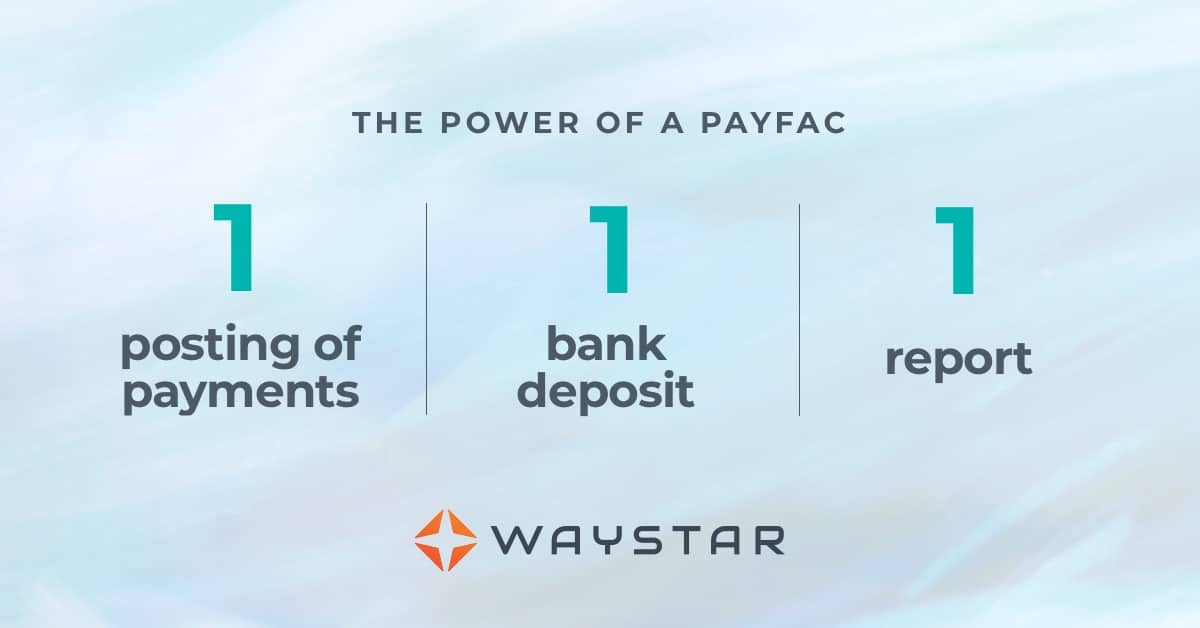If you’re in healthcare rev cycle management, acronyms are nothing new.
Still, the ones that come along payment processors can be daunting. From independent sales organizations (ISOs) to payment facilitators (PayFacs), it’s crucial to understand the goals and functions of each.
This guide will uncover the pros and cons of payment processing, so you can determine whether a PayFac or ISO is right for your organization.
What is an ISO in payments?
An ISO is an Independent Sales Organization
Before you dive into PayFacs, you need to understand ISOs. An ISO is an independent sales organization – a company that resells payment-processing services on behalf of a financial institution (FI).
ISOs:
- Are resellers
- Serve as an intermediary between FIs and their clients
- May provide customer service and support on behalf of the FI
- Are not involved in the movement of money
What are the limitations of an ISO?
While ISOs can set up a merchant account, or merchant ID (MID), with the sponsoring bank for clients, they are hands–off in moving money. That means a client may have to work with multiple parties — processors, gateways, etc. — to get their payments processed.
What is a payment facilitator, or PayFac?
A PayFac is an organization that processes payments on behalf of merchants
A payment facilitator is a merchant-service provider that simplifies the payment-collection process for its clients (also called sub-merchants).
A PayFac:
- Manages all vendors involved with merchant services
- Maintains policies and procedures with card networks (Visa, Mastercard, etc.)
- Oversees compliance with the payment card industry (PCI)
- Audits transaction activity
- Is responsible for moving the client’s money
What’s the difference in an ISO and a PayFac?
While an ISO merely connects a merchant to a bank, a PayFac owns the full client experience. In other words, ISOs function primarily as middlemen (offering payment processing), while PayFacs are payment facilitation partners to their clients.
A PayFac sets up and maintains its own relationship with all entities in the payment process. It also holds a master merchant account and MID with a sponsoring bank, which means it can acquire and aggregate payments for clients.
A PayFac is directly responsible for key parts of the process, such as:
- Underwriting
- Merchant onboarding
- Funds disbursement
- Chargeback dispute resolution
- Anti-Money Laundering (AML) practices
- Risk monitoring
- Know Your Customer (KYC) compliance

Does everyone in rev cycle management need a PayFac?
For some organizations, an ISO may be enough.
However, if your organization has difficulty scaling operations, reconciling payments daily, or viewing payments in real-time, a PayFac can help. The same is true if your staff often asks for more accurate, up-to-the-minute data.
What a PayFac like Waystar can do:
- Onboard new clients quicker and easier
- Scale effectively (especially when clients open new locations)
- Allow clients to consolidate vendors
- Reduce staff needs through chargeback dispute management
- Leverage real-time data accuracy
- Remove locations from PCI scope
- Guarantee to-the-penny match of posting files
- Offer more control and insight into the payments process
- Give more cost savings to clients
- Consolidate payments to one posting, one deposit, and one report — every day
Why Waystar?
As a PayFac, Waystar provides fast, accurate, and reliable payment consolidation, technology and hardware. Through practices like MID consolidation and streamlined KYC, we’re able to facilitate better, faster communications and payments. That creates a patient-centric timeline that can improve satisfaction while boosting cashflow.
Want to put the power of a PayFac to work for you?
Find this post helpful?
Watch our on-demand webinar on PayFacs


